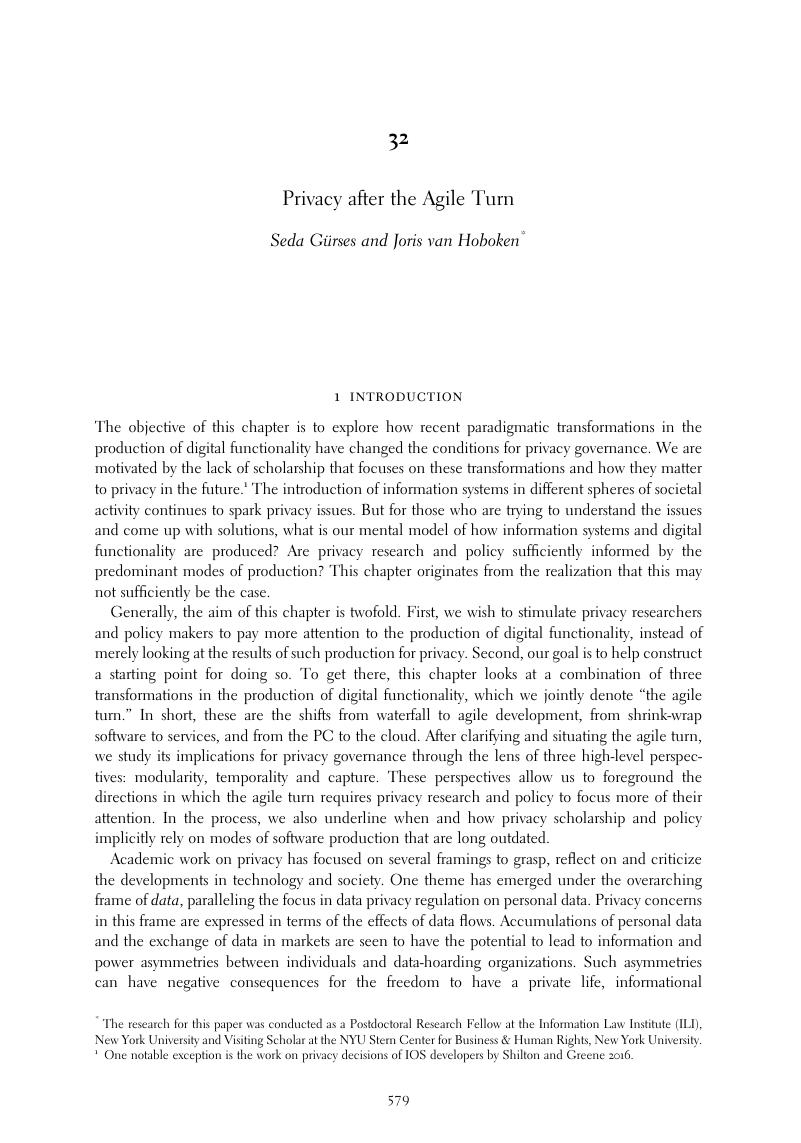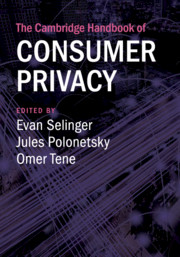Book contents
- The Cambridge Handbook of Consumer Privacy
- The Cambridge Handbook of Consumer Privacy
- Copyright page
- Contents
- Contributors
- Part I Introduction
- Part II The Pervasiveness and Value of Tracking Technologies
- Part III Ethical and Legal Reservations about Tracking Technologies
- Part IV International Perspectives
- Part V New Approaches to Improve the Status Quo
- 20 The Intersection of Privacy and Consumer Protection
- 21 A Design Space for Effective Privacy Notices*
- 22 Enter the Professionals
- 23 Privacy Statements
- 24 Privacy versus Research in Big Data
- 25 A Marketplace for Privacy
- 26 The Missing Role of Economics in FTC Privacy Policy
- 27 Big Data by Design
- 28 The Future of Self-Regulation Is Co-Regulation
- 29 Privacy Notices
- 30 It Takes Data to Protect Data
- 31 Are Benefit-Cost Analysis and Privacy Protection Efforts Incompatible?
- 32 Privacy after the Agile Turn
- References
32 - Privacy after the Agile Turn
from Part V - New Approaches to Improve the Status Quo
Published online by Cambridge University Press: 18 April 2018
- The Cambridge Handbook of Consumer Privacy
- The Cambridge Handbook of Consumer Privacy
- Copyright page
- Contents
- Contributors
- Part I Introduction
- Part II The Pervasiveness and Value of Tracking Technologies
- Part III Ethical and Legal Reservations about Tracking Technologies
- Part IV International Perspectives
- Part V New Approaches to Improve the Status Quo
- 20 The Intersection of Privacy and Consumer Protection
- 21 A Design Space for Effective Privacy Notices*
- 22 Enter the Professionals
- 23 Privacy Statements
- 24 Privacy versus Research in Big Data
- 25 A Marketplace for Privacy
- 26 The Missing Role of Economics in FTC Privacy Policy
- 27 Big Data by Design
- 28 The Future of Self-Regulation Is Co-Regulation
- 29 Privacy Notices
- 30 It Takes Data to Protect Data
- 31 Are Benefit-Cost Analysis and Privacy Protection Efforts Incompatible?
- 32 Privacy after the Agile Turn
- References
Summary

- Type
- Chapter
- Information
- The Cambridge Handbook of Consumer Privacy , pp. 579 - 601Publisher: Cambridge University PressPrint publication year: 2018
References
- 22
- Cited by



